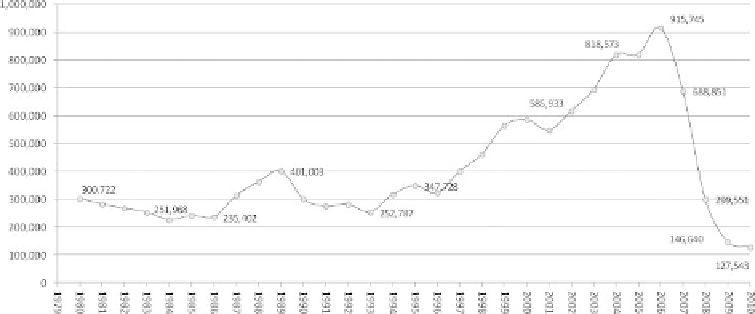Environmental Engineering Reference
In-Depth Information
In the first case, the owners of renewable energy installations receive a feed-in tariff
for the energy produced. The amount of this payment is set by the government and
depends on the technology. In the case of premium payments, the electricity produced
is freely sold on the electrical energy market. It is bought at the market price (or at a
freely negotiated price), supplemented by a premium payment from the government.
In the same way as the tariff, the amount of the premium depends on the type of
renewable energy.
Regarding the promotion of renewable energies for heating and cooling in EU
countries, there are two types of financial incentives: (i) direct investment aids; and (ii)
specific funding programmes for solar thermal installations (M&I, 2010). For example,
in 2003-2006, subsidies were given in the following conditions:
•
Direct aid.
40% of the investment cost of the thermal installation and an added
10% if the applicant was a small- or medium-sized company. The investment was
calculated by fixing a maximum of 500 euros/m
2
in the case of thermal solar
installations for the production of hot water, whatever its use (CDET, 2003).
•
Financing of installations.
Other programmes offered financial aid in the form of
low-interest loans that covered up to 100% of the investment costs (thermal solar
collectors, storage tanks, heat exchangers, circulation pumps, pipes, valves and
connections, expansion tanks, insulation, construction work, etc.), the engineering
costs associated with the project, as well as the funds necessary to transact the
permits and aids (up to 675
/m
2
), (IDAE, 2004).
a
20.7 ECONOMIC IMPACT OF SOLAR THERMAL ENERGY
The residential building sector in Spain experienced spectacular growth in 1996-2007
(see Graph 20.7.1). This was accompanied by a significant increase in the investment
in housing. In fact, from a little more than 5% of the gross domestic product (GDP)
in the 1990s, it rose to 7.4% in 2007. Not surprisingly, construction was also an
Graph 20.7.1
Evolution of the number of residential buildings (Ministry of Development. Spain).

Search WWH ::

Custom Search